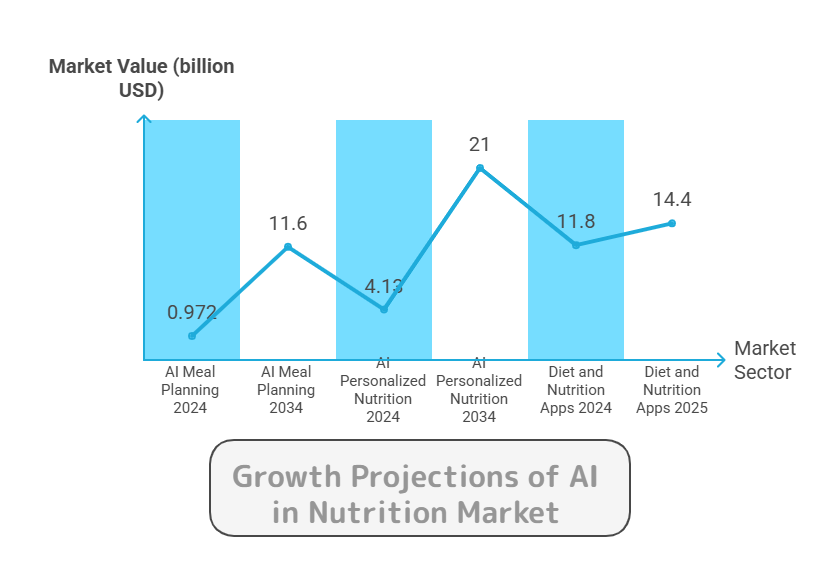AI in Nutrition: Friend, Foe, or Fad?
A quick scan of real trends, results, and results—so you can use AI nutrition tools without falling into traps.
AI meal plans and macro tracking are flooding the wellness app space but are they delivering?
AI nutrition isn’t a fringe experiment anymore—it’s a booming, big-money business that’s rewriting how people plan meals, track macros, and engage with wellness. From glucose-guided meal nudges to AI-powered chatbots dishing out snack swaps, these tools promise personalized precision at scale. But is it all hype, or are consumers actually adopting these solutions in meaningful ways? A look at the latest numbers suggests it’s not just wishful thinking.
The Numbers Don’t Lie (Mostly)
The AI-driven meal planning app market jumped from $972 M in 2024 to projections of $11.6 B by 2034—a 28% CAGR 💥 market.us+1insightaceanalytic.com+1.
The broader AI-personalized nutrition sector was valued at $4.13 B in 2024 and is forecasted to hit $21 B by 2034, growing at ~18% annually insightaceanalytic.com.
Overall diet & nutrition apps pulled in $11.8 B in 2024, expected to reach $14.4 B in 2025 (21.6% CAGR) market.us+6thebusinessresearchcompany.com+6blog.tbrc.info+6—and by some reports, the global nutrition-app market alone may hit $7–9 B by 203
Where AI Tools Shine
NutriSense connects continuous glucose monitoring with expert interpretation—popular with users managing glucose response globenewswire.com+4nextr.in+4tribe.ai+4.
MyFitnessPal + Tribe AI now supports voice logging and chat-based meal advice, improving ease and user engagement nextr.in+3tribe.ai+3grandviewresearch.com+3.
Research-grade tools like MealMeter use sensors (glucose, HRV, motion) to estimate macronutrients within ~13 g error—fascinating for clinical or high-performance use arxiv.org.
Emerging systems like NutriGen (LLM-driven meal plan generator) hit 1.6–3.7% error vs USDA targets, showing serious potential arxiv.org.
The Mixed Verdict
What works:
Personalized insights boost awareness and adherence—especially in metabolic or athletic populations.
Frictionless logging (voice, image) keeps people engaged longer en.wikipedia.org+5tribe.ai+5metatechinsights.com+5.
What hurts:
Risk of obsessive, “perfect” eating—AI nudges can become points of stress, not support.
Without human context, nuanced needs (e.g. stress eating) get ignored.
For Operators: Turning AI Nutrition into Sensible Strategy
Set clear guidelines for AI tool use—don’t pitch them as clinical dietitians, present them as decision-support.
Train staff on compassionate data interpretation—humans still need to contextualize macros, emotions, and lived realities.
Use insights wisely—leverage AI analytics for group challenges or programming optimization, not for rigid compliance policing.
Closing Prompt: AI nutrition tools are optional helpers, not human replacements. When used thoughtfully, they can elevate your offering—that said, lean too hard into perfection, and you risk losing members who need empathy, not algorithms.

